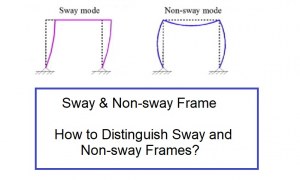🕑 Reading time: 1 minute
Bunkers and silos are structure that are used as storage tanks. Structural design of bunkers with procedure and design considerations are discussed. The bunkers and silos made of reinforced concrete have almost replaced the steel storage structures. Concrete bins possess less maintenance and other architectural qualities greater than steel storage tanks. They are used to store materials like grain, cereals, coal cement etc. They both serve the purpose of bins. Concept and difference between bunkers and silos are explained in the following sections: Bunkers are mainly employed for storage of underground dwellings. These are mainly related to emergency conditions during wars. The main two characteristics that make a bin to act as a bunker is based on the- Depth (H)
- Angle of rupture

Fig.1: Sectional View of a Bunker
The angle of rupture is formed atContents:
Design Consideration of Bunkers
1. Design of Bunkers with Rectangular or Square Bottom
The main structural elements that constitutes a bunker are shown in figure-2. They comprise of- Vertical walls
- Hopper Bottom
- Edge Beam (At the top level)
- Supporting Columns

Fig.2: Structural Elements of a bunker
The design Procedure can be explained in following steps:Step 1: Design of Vertical Walls
Based on Rankine's Theory, the lateral pressure applied on the vertical wall can be given by the formula
Fig.3: Representation of angle of surcharge (?) and pressure component acting on walls (p).
This pressure pa is acting in the direction parallel to angle of surcharge. So, the pressure that is applied on the vertical walls are the horizontal component of pa. Let it be p as shown in figure-3.
Design Moments:
a) Negative Moments at the supportsDirect Tension:
a) Tension in long wallsEffective depth:
The effective depth is given by the formula To resist maximum bending moment adequate thickness should be provided. The reinforcement details are provided for the vertical walls based on the maximum bending moments and the direct tension design values.
The reinforcement obtained from above equation (Ast), is arranged in the horizontal direction. Minimum distribution reinforcement is provided in the vertical direction.
Minimum cross section of 300mm x 300mm edge beams are provided at the top, to facilitate attachments used by conveyor supports.
To resist maximum bending moment adequate thickness should be provided. The reinforcement details are provided for the vertical walls based on the maximum bending moments and the direct tension design values.
The reinforcement obtained from above equation (Ast), is arranged in the horizontal direction. Minimum distribution reinforcement is provided in the vertical direction.
Minimum cross section of 300mm x 300mm edge beams are provided at the top, to facilitate attachments used by conveyor supports.
Step 2: Design of Hopper Bottom
The hopper bottom is designed for direct tension caused due to: a) Self weight of the material b) Self weight of sloping slab
Fig. 4: Sloping slab in the hopper subjected to direct tension

Fig.5: Sloping Slab in Hopper Bottom Subjected to bending
From figure-4 and 5, wt = weight of material Calculation of Direct tensionCalculation for Bending Moment
To determine the maximum moments at the supports and the center of the sloping slab, we need to determine the normal pressure intensity which is the sum of normal pressure due to material weight and the self-weight of the slaba) Due to material weight
If w = density of the material h= average height at the center of the slope of bottom L = Effective span at the center of the slope, as shown in figure-5 Then, Normal pressure intensity for depth h isb) Due to self-weight of slab
Let Wd be the self-weight of slab Its normal component with respect to plane of slab is given by,2. Design consideration of Bunkers with Circular Bottom
For design of bunkers with circular cross section, vertical walls are subjected to a hoop tension along the diameter of the bunker. The value of hoop tension is given by the formulaTh = 0.5ph .D
D = Diameter of the bunker ph = horizontal component of pressure at a depth h from the top The reinforcement details are provided to resist the hoop tension for this a minimum thickness of 120mm is recommended. The hopper bottom is designed for both direct and hoop tension due to normal pressure on the sloping slabs. Minimum vertical reinforcement is provided based on the bar used.

